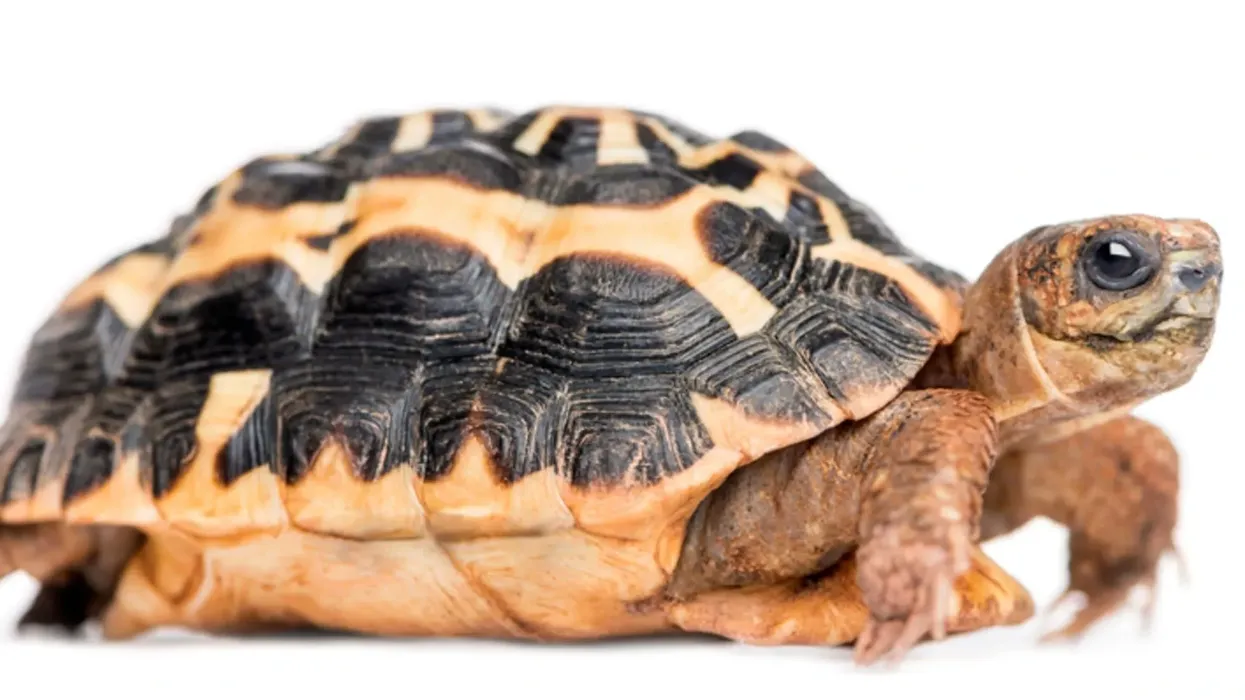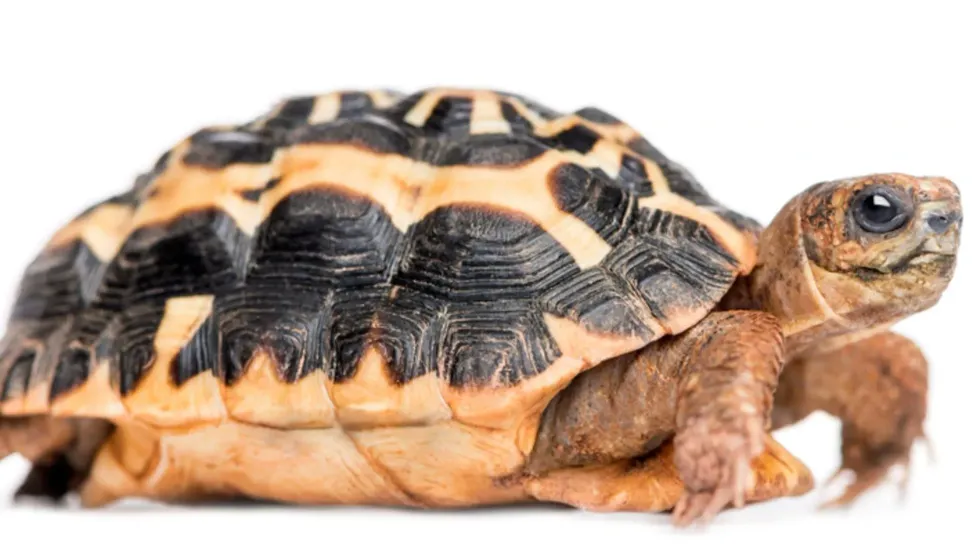The spider tortoise (Pyxis arachnoides) is part of the family Testudinidae. Spider tortoises are one of only two species found in the genus Pyxis.
The other species in the genus is the flat-tailed tortoise (Pyxis planicauda). They are also known as flat-backed spider tortoises and Madagascan flat-tailed tortoises. This species is endemic to the west coast of the island of Madagascar.
The spider tortoise (Pyxis Arachnoides) has three subspecies. These have different sizes and colors and hence are divided into three groups. The names of the subspecies are northern spider tortoises (Pyxis arachnoides brygooi), southern spider tortoises (Pyxis arachnoides oblonga), and common spider tortoises (Pyxis arachnoides arachnoides).
Primarily found on the island of Madagascar, this species of tortoise is extremely popular as it is the smallest species of tortoises found in the world. They are also in demand for their coloration and the wonderful pattern and markings on their carapace. They can be spotted in various zoo habitats across the world.
There are over 49 species of tortoises found in the world. Read some interesting facts about the Indian star tortoise and the pancake tortoise here on Kidadl.
Spider Tortoise Interesting Facts
What type of animal is a spider tortoise?
Spider tortoises are a species of tortoises in the genus Pyxis.
What class of animal does a spider tortoise belong to?
Spider tortoises fall under the class of Reptilia in the kingdom of Animalia.
How many spider tortoises are there in the world?
The exact population of spider tortoises is unknown at the moment. Due to various alarming reasons, their population has been highly affected in recent times with a few subspecies declining by almost half. They remain endangered.
Where does a spider tortoise live?
Spider tortoises are found in arid regions of coastal areas in southern Madagascar. They inhabit the southwestern part of the island and are found in areas of spiny vegetation.
They are found on the coast up to 6.2-31 mi (10-50 km) inland to the north up to Morombe in Madagascar. The southern spider tortoise is found in the extreme part of southeastern Madagascar, between the Menarandra River and Lake Anony. The northern spider tortoise is found in the Morobe province to the north of Tulear.
Their range is divided within the Mikea Forest. South Madagascar is the only part of the country where these tortoises are endemic.
What is a spider tortoise‘s habitat?
The wild habitat of spider tortoises covers a range of spiny vegetation in sandy coastal areas. The range of radiated tortoises sometimes overlaps with that of spider tortoises, but not in the northern extent of their range in their desert sand habitat. Ideally, these tortoises inhabit a dry and deciduous forest on the coast.
These tortoises are mostly seen emerging from their hideouts in the wet season. During the dry season, the tortoises mostly remain hidden under roots, leaf litter, and sand. They emerge at the start of the rainy season and they estivate for the duration of the drier season.
This is usually from April to November. They are most active during the wet season when there is new growth in plants. These tortoises are also most active in the mornings after sunrise.
Who do spider tortoises live with?
Except for during the breeding season, they live alone. Although, there is sometimes the formation of groups.
How long does a spider tortoise live?
The average lifespan of the spider tortoise is around 70 years.
How do they reproduce?
Spider tortoises stay buried in the sand most of the year. They are only active for six to eight months. During this period, females lay a single egg.
The young stay inside the egg without any development until favorable conditions return the next year. The eggs take 220-250 days to hatch. After hatching, the young hatchling measures up to 1.5 in (3.8 cm).
In a zoo, females are observed to lay up to three clutches of one egg each in a year. However, there is not much information on the same pattern being seen in wildlife too. Spider tortoises reach sexual maturity at an average age of six to 12 years.
What is their conservation status?
Spider tortoises are a threatened species in their wild habitat. The conservation status of the species has been categorized as Critically Endangered by the IUCN Red List.
This species with its beautiful shell is often a victim of wild habitat degradation. Frequent agricultural practices and mining have led to the destruction of the habitat of these tortoises. These tortoises have also been exploited a lot by the international pet trade.
They are threatened in Madagascar and hence, as part of many conservation practices, the pet trade of this species is now illegal in many places. However, they are still extensively smuggled for food, body parts, and as illegal pets.
Spider Tortoise Fun Facts
What do spider tortoises look like?
Spider tortoises have radiating markings on their carapace which can often be seen as web-like structures. The dark brown or black carapace has web-like patterns of yellow coloration. The head is dark with yellow-colored spots.
The semi-hinged plastron, which allows the tortoises to pull their head and front legs into their shell, is colored yellow. The legs and the tail are colored brown. Males are smaller than females and have a thicker tail on average.
The plastron of the southern spider tortoise is tan or yellowish in color. They have a flexible hinge on the plastron and the edges and the bridge have black markings.
The anterior lobe of the southern spider tortoise closes completely to touch the carapace. The anterior lobe of the northern spider tortoise (Pyxis arachnoides brygooi) does not close completely to touch the carapace.
There are no markings on the plastron of this subspecies. The anterior lobe of the common spider tortoise closes completely to touch the carapace and also has no markings on the plastron.

How cute are they?
They are considered pretty cute and attract large crowds in their zoo enclosures.
How do they communicate?
Tortoises use a series of vocal, visual cues, and smells for the purpose of communication. They also communicate with touch sometimes.
How big is a spider tortoise?
The average length of spider tortoises has a range of up to 6 in (15.24 cm). Females are a little larger than males with males having a range up to 4.5 in (11.43 cm).
The length of one of the largest tortoises in the world, the Aldabra giant tortoise, has a range of 36-48 in (91.4-121.9 cm). Its weight also has a range of 330 lb-550 lb (149.7-249.4 kg).
How fast can a spider tortoise move?
Tortoises are pretty slow animals with the leopard tortoise having a speed of 1 mph (1.6 kph). The exact speed of the spider tortoise is not known.
How much does a spider tortoise weigh?
The weight of this species ranges from 0.44-0.87 lb (0.2-0.4 kg).
What are their male and female names of the species?
Males and females are not given different names.
What would you call a baby spider tortoise?
A young spider tortoise is called a hatchling.
What do they eat?
Spider tortoises mainly feed on a range of grasses, young leaves, plants, and succulents. They also feed on many types of dried leaves, fallen fruit, insect larvae, and dead animals (rare).
These tortoises have been seen to search for insect larvae in cow dung. In captivity in a zoo, food in the diet of spider tortoises includes vegetables and tortoise biscuits.
In their wild habitat, all subspecies of spider tortoises like Pyxis arachnoides brygooi, Pyxis arachnoides oblonga, and Pyxis arachnoides arachnoides are preyed on by many animals like birds of prey, the fossa, and snakes.
Are they dangerous?
They are not considered dangerous and people are quite fond of these animals in their zoo habitats. Tortoise species are known to bite sometimes though.
Would they make a good pet?
The small size and the extremely beautiful pattern and markings on the carapace or shell of the spider tortoise make it a favorite among many exotic pet owners across the world. These animals are quite popular in the international trade market.
However, these pet trade practices have threatened this tortoise's population. So these animals should be kept in the zoo rather than at home.
Did you know...
Spider tortoises are the smallest of four endemic species found in Madagascar. The radiated tortoise is found in the spiny forest in the southern part of the island.
These animals have quite a long life averaging 70 years.
Spider tortoises are usually not active during the dry season.
Some subspecies of the spider tortoise have an anterior lobe that closes completely, whereas, in others, the anterior lobe does not close fully to touch the carapace.
Why is the flat-tailed spider tortoise endangered?
Habitat loss due to deforestation and human encroachment are seen as the main reasons for the endangerment of the flat-tailed spider tortoise. The pet trade has also been seen as a major cause for the alarming status of the species.
How many eggs do spider tortoises lay?
Females of the spider tortoise species are known to lay just a single egg in a season. The breeding season is usually from November to March.
Here at Kidadl, we have carefully created lots of interesting family-friendly animal facts for everyone to discover! Learn more about some other reptiles from our red-eyed tree frog facts and Texas horned lizard facts pages.
You can even occupy yourself at home by coloring in one of our free printable spider tortoise coloring pages.









